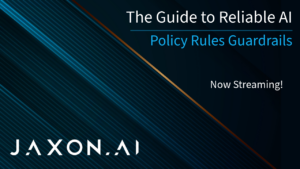
The digital world is awash with an abundance of text-based information. This wide spectrum of knowledge is structured in the form of various documents. From research papers, corporate memos, and blog posts to legal contracts and product specifications, every document has a unique narrative to tell and a specialized language to communicate. These languages – defined by structure, formatting, and context – constitute the ‘Language of Documents’. But for a machine to comprehend and process these languages, a complex pipeline involving multiple algorithms, transformer models, and a knowledge graph (with use case-specific subgraphs) is essential.
Deciphering the “Language of Documents”
When we refer to the “Language of Documents,” we’re talking about the syntax, semantics, and organization patterns that make a document recognizable and understandable. Each document has its unique schema, a structural blueprint that determines its layout, format, and the order in which information is presented. For instance, a scientific research paper has a different schema compared to a legal contract, and both are distinct from a news article or blog post.
The understanding and interpretation of these schemas involve an intricate process known as document parsing. Parsing deciphers the language of a document, breaks it down into smaller components, and converts it into a format that can be processed by a machine.
The Complexity of Document Parsing
Document parsing isn’t just about reading and understanding text; it’s a multifaceted challenge that encompasses text extraction, format preservation, language translation, and semantics comprehension.
Text extraction involves isolating and retrieving useful information from a document. But remember, a document is not just plain text. It contains various elements like headers, footers, tables, images, and footnotes, each having specific relevance in the overall context. Thus, the algorithm should be competent to distinguish and extract these elements accurately.
Once the text is extracted, preserving the original format is critical to maintain context. For instance, a table holds data in a specific structure that gives it meaning. Disassembling it into plain text might strip it of its context and render it less useful or even meaningless.
Language translation comes next, converting the text from its original language into a language that the system or end-user can understand. Lastly, semantics comprehension delves into the meaning of the text, unraveling the underlying nuances and interpretations associated with the words.
Populating Knowledge Graphs
Navigating this complex document parsing pipeline is a herculean task that requires the combination of various algorithms and transformer models.
Algorithms are the logical constructs that guide the parsing process. They steer the extraction, translation, and preservation of the text. These algorithms range from simple rule-based ones to more complex machine learning and deep learning models, each offering different strengths and dealing with different aspects of the process.
We often use Transformer models, a class of deep learning models that handle the semantics comprehension part. Using self-attention mechanisms, Transformers understand the context of words in a sentence, which is crucial in interpreting the actual meaning of the document. Prominent examples include models like BERT, GPT, and their derivatives, which have proven to be highly effective in understanding and generating human-like text.
It is the confluence of these diverse algorithms and transformer models that can properly parse documents, comprehend their unique languages, and populate a knowledge graph. The more complex the document’s language, the more sophisticated the model required to decipher it.
Concluding Thoughts
In essence, understanding the “Language of Documents” is akin to mastering multiple human languages, each with its unique grammar, syntax, and nuances. As we push the boundaries of machine learning and natural language processing, our ability to parse, understand, and interact with a wider range of document types continues to expand. The complexity of this task underscores the remarkable strides that have been made in the field, but it also highlights the exciting challenges that lay ahead.
In the era of information overload, developing sophisticated parsing pipelines that populate knowledge graphs is the way to properly interpret the language of documents. As our technological capabilities continue to advance, we can look forward to a future where machines can truly comprehend the myriad languages of our documents, unlocking new levels of understanding and efficiency.
Want to learn more? Contact us and let’s get started!





